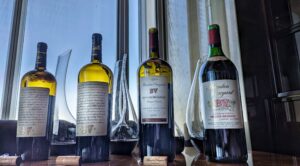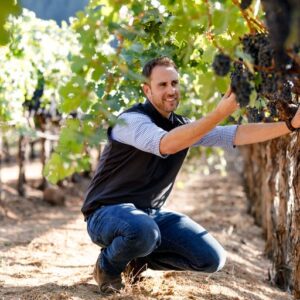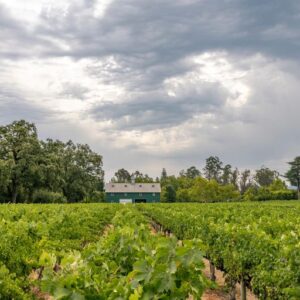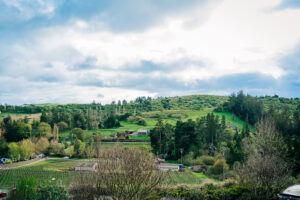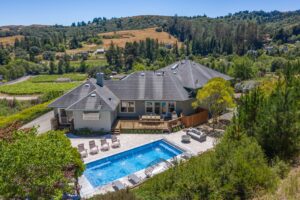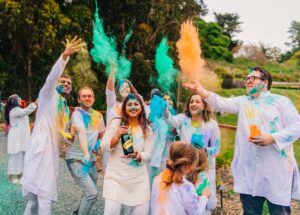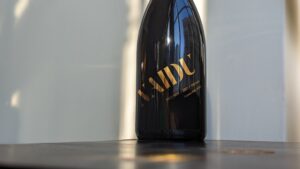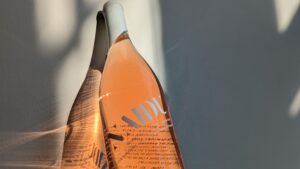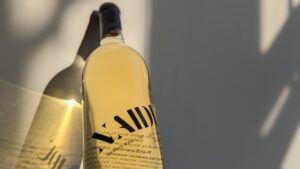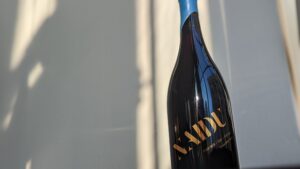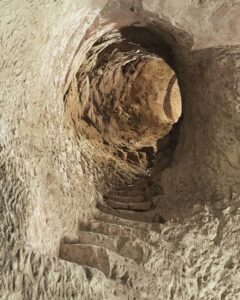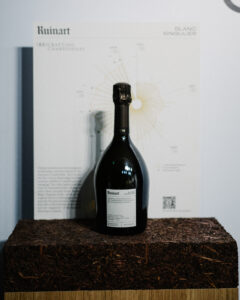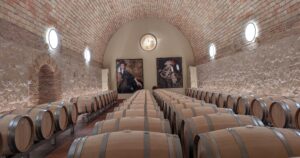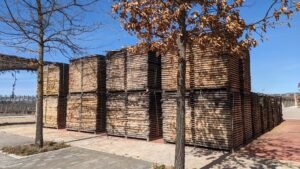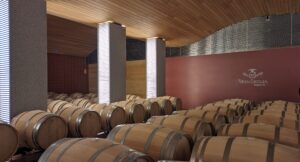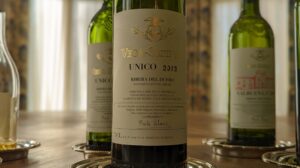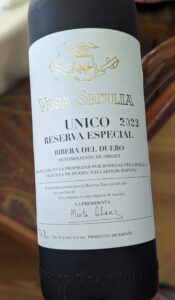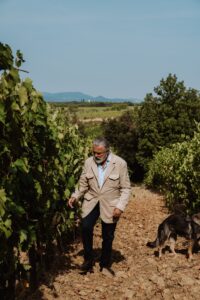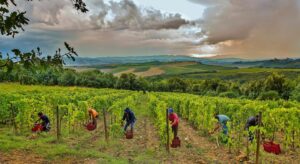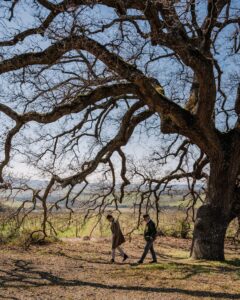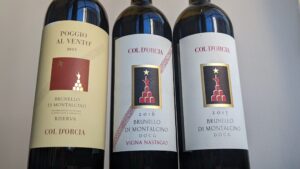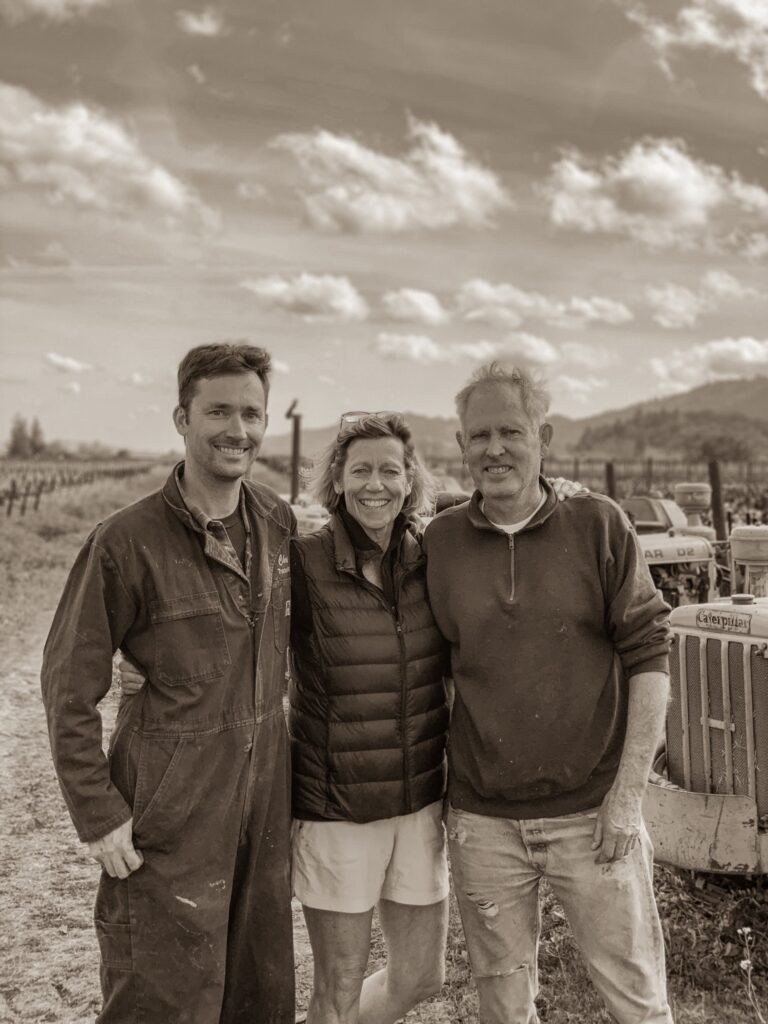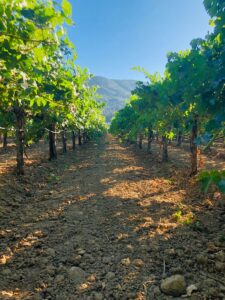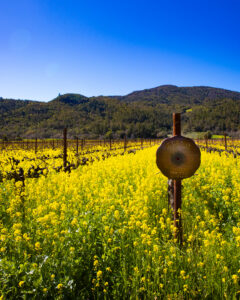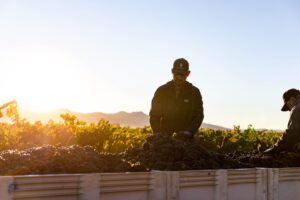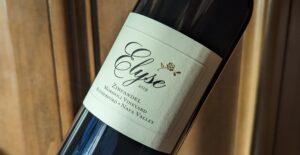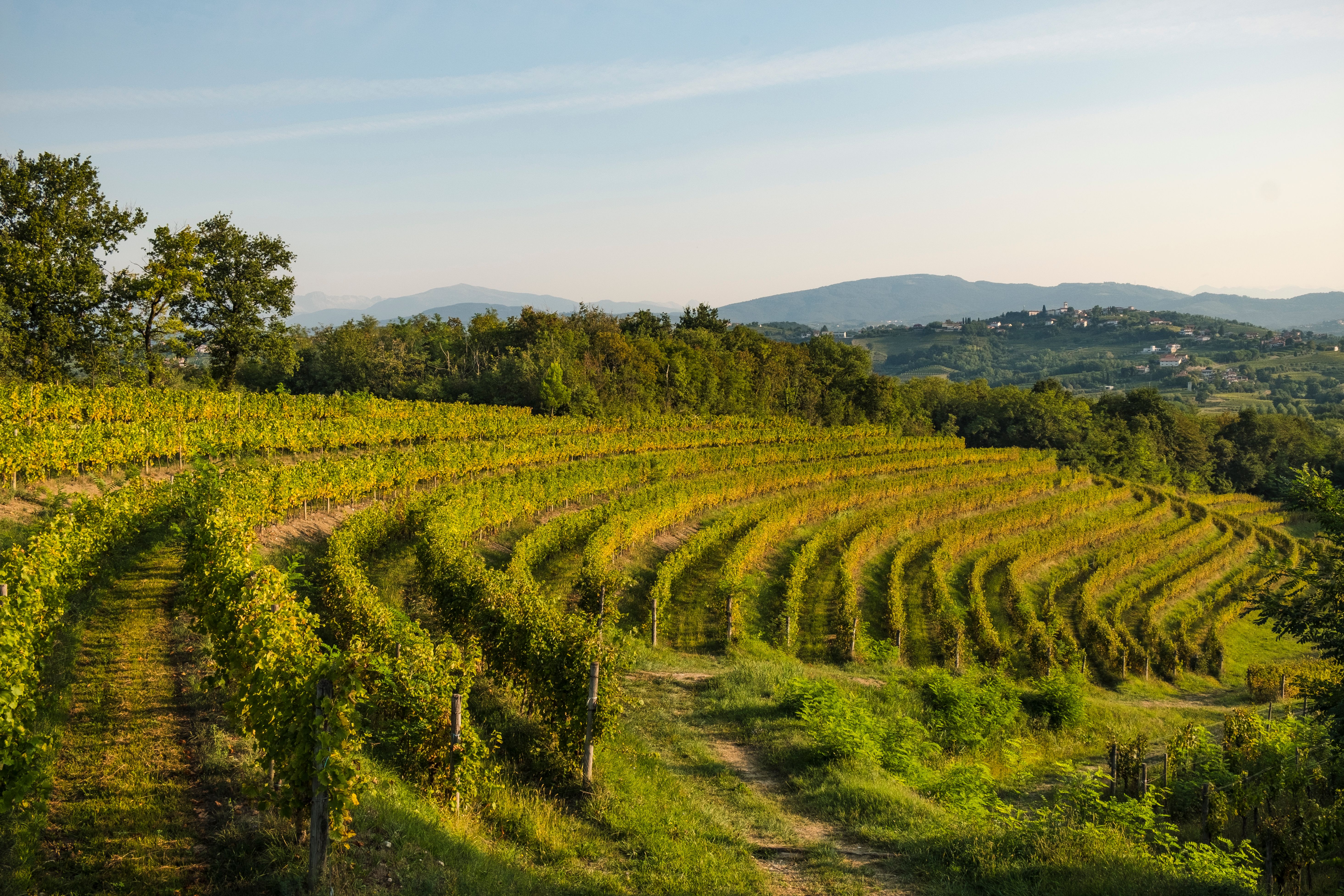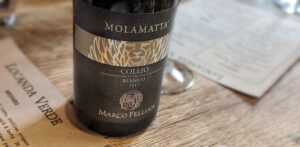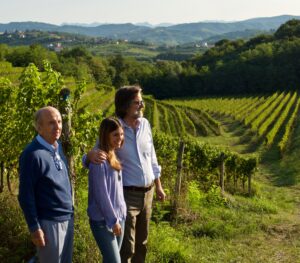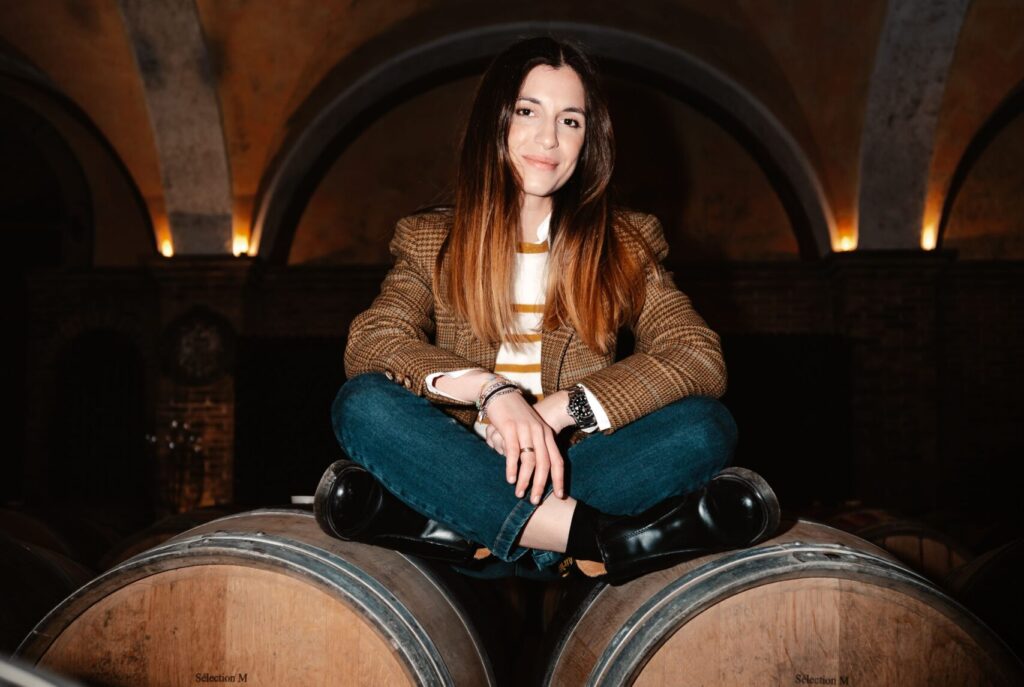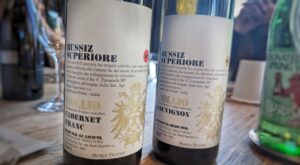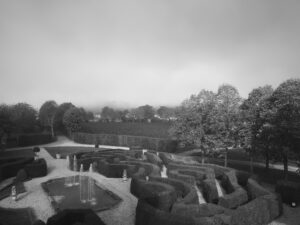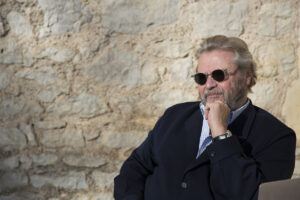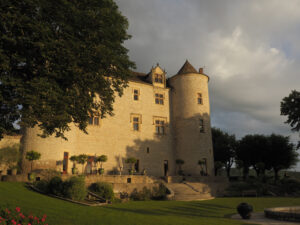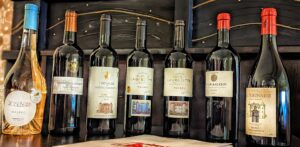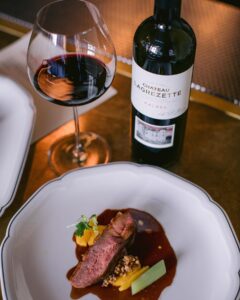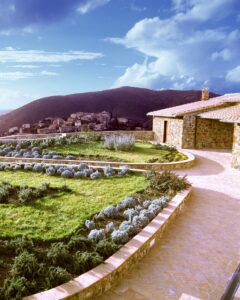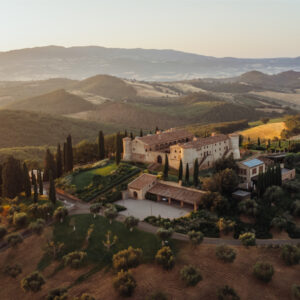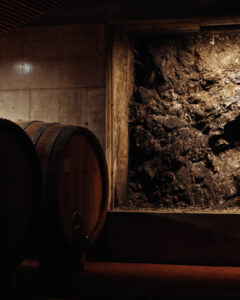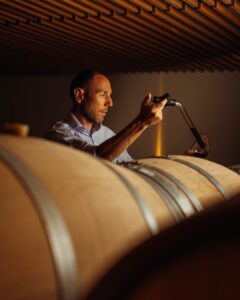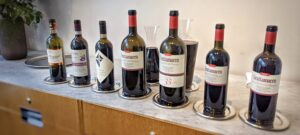As the 19-year-old man enthusiastically drove a forklift, music blasted and hoses exploded with wine, spraying it all over the cellar. This was one of the best parts of this young man’s day yet a close second was his morning routine – driving around stunning Russian River Valley vineyards while smoking Cuban cigars that the vineyard manager generously shared. “Can’t believe this is a real job?” the young man would exclaim almost daily. Yes, his parents loved to collect wines, and he grew up in a household that always paired it with dinner but it seemed something only to be enjoyed during one’s downtime and not a viable path to gainful employment. Plus, this college kid already had a long-established intended plan as he would follow in the footsteps of his hero, his grandfather, a pilot in World War II and join the US Air Force Academy.
But when he was in high school the idea of having to spend six years minimum of service as well as the additional time at pilot school was an overwhelming commitment at such a young age and so, instead, of going to the United States Air Force Academy, he went to UC Davis for college as part of the ROTC (Reserve Officers’ Training Corps) program. But he had every intention of graduating as a member of the ROTC program at UC Davis, which was commissioned by the US Air Force.
Lo and behold, to his surprise, UC Davis had an incredible winemaking program, one of the country’s best and top in the world. And so this young man, Trevor Durling, would pass on his typical summer job to work instead at a winery as he was fascinated by the idea that wine could be a career. Next thing he knows, he is smoking Cubans, driving an ATV in the vineyards to pick grapes as samples, driving a forklift in the cellar helping to move heavy loads, all while existing in the most creative and energetic environment he had ever experienced; it was sensory overload that made him feel more alive than he had ever felt. That summer changed his “entire trajectory” towards winemaking as the minute he returned to Davis, he changed his major to follow that path.
Trevor then worked at wineries worldwide and a handful in California to gain as much experience and knowledge in all aspects and styles of winemaking as he could until he found his place. Something clicked when he worked for a small, high-end Cabernet Sauvignon producer on the Sonoma side of Mount Veeder, and in 2009, when he first came to Rutherford in Napa, something really clicked as he was assisting the winemaking team at BV with a special project, and then became the assistant winemaker for the Rutherford producer Provenance Vineyards working with the renowned Hewitt Vineyard, in the Rutherford Bench. Today, BV makes special bottlings out of this stellar site to honor the legendary William A. Hewitt.
One day in 2016, he was given “the golden tap on the shoulder” to come to the Rutherford Bench to become the chief winemaker at BV (Beaulieu Vineyard) – one of the founding wineries of Napa Valley. And today, he is releasing the 2016 BV Rarity in magnum format, the flagship BV wine showcasing only stellar vintages of which 2016 is only the sixth vintage since the inaugural in 1968 that has been given such an honor.
Carving Out History
It seemed almost too good to be true to become the chief winemaker at BV, as Trevor loved these iconic wines but also, he is a huge history buff and BV is undoubtedly a big part of the incredibly successful history of Napa Valley. BV was founded in 1900 by Georges de Latour, a Frenchman from an area outside of Bordeaux. His family was a small grape grower who had their vineyard decimated by Phylloxera, a microscopic louse, in the 1860s but, through time, found a way to come back by grafting French grape vines onto American rootstock which were Phylloxera resistant. But Georges was a true entrepreneur at heart so the US, the land of opportunity, called to him. He ended up in California and quickly made friends with many of the wine producers. Realizing that there was a great business opportunity with tartaric crystals lining many of his friends’ wine fermentation tanks, he decided to make a deal with them to clean their tanks so he could use the tartaric crystals to make cream of tartar, starting a very successful business that he would later sell.
He used the money to buy land on the Rutherford Bench and since it was the turn of the 20th century, one could have never known that it would possess what would become some of the most valuable vineyards in the world. When Georges’ wife saw the property for the first time, she exclaimed, “Beau lieu!” which means beautiful place in English, and that is how BV (Beaulieu Vineyard) got its name. Within a couple of years, he purchased an adjacent property that was 127 acres in size that was planted with plum and walnut trees. He ripped out those crops and planted 80 acres of the grape variety Petite Sirah, which was the most common during that time and for many years he would sell the grapes. Well, Phylloxera also came after the French grapes varieties planted in California and many wine grape growers were losing their vines to this pest. But since this same thing happened to Georges’ family back in Bordeaux, another business was born, importing French grape varieties already grafted onto American rootstock from France, and for a time, he acted as a nursery for all the wine grape growers in Napa Valley.
When Prohibition legally shut down the US wine industry between 1920 to 1933, the only couple of exceptions for legal winemaking was for sacramental wine and medicinal purposes, as doctors could prescribe wine as medicine. So Georges, seeing another opportunity, applied for licenses to do both and quadrupled his wine business during Prohibition. Once Prohibition ended, Georges turned the focus of his wine business from quantity to quality; as a man who was always two steps ahead, he could see that, one day, quality would be the future for Napa Valley wine. Then, a friend of Georges, a professor at UC Berkeley, which is where the current UC Davis winemaking department started, told him about a talented chemistry and agronomy student named André Tchelistcheff, who was conducting research at the Pasteur Institute in Paris.
André was a remarkable man by all accounts as he was born in Moscow in 1901 and fought in the Russian Civil War as an infantry officer in the White Army and was left for dead on the battlefield after his entire platoon was killed. After surviving in a foxhole for 38 hours with a broken back, a man on horseback picking dead bodies off the battlefield took him back to base. He made a reputation for himself as having a brilliant scientific mind at a Czechoslovakian university, so he was invited to do research at the Pasteur Institute and worked for the French National Agronomy Institute.
Georges de Latour went to Paris to convince André to come back with him and André started at BV in 1938 becoming technical director of winemaking until he retired in 1973; then he came out of retirement to come back in 1991 as a consultant at the age of 90 years old until he passed away a few years later. André Tchelistcheff is considered America’s most influential post-Prohibition winemaker and is often called “the Maestro.”
Rarity
André Tchelistcheff was the first to produce Rarity in 1968, and at the time, it was called ‘Special Burgundy.’ It was not bottled in a magnum format like today but in a 750ml Burgundy-shaped bottle yet the current label still takes its inspiration from the original. Also, today Rarity is a Cabernet Sauvignon-based wine with a small amount of Petit Verdot. Yet, Rarity in its earliest vintages was an assortment of varieties planted on some of the most prime real estate in Rutherford, Napa Valley, such as the first vintage, 1968, was mainly made up of Gamay and the lesser known red grape variety Mondeuse from the Savoy wine region in France as well as a bunch of other unorthodox grapes. Cabernet Sauvignon was not really of significant acreage in the Napa Valley until the 1950’s, according to BV chief winemaker Trevor Durling.
As if BV didn’t already have a couple of iconic Napa legends as part of their story, another one, who is still a strong force today in the world of wine, is one of the most famous vineyard owners, Andy Beckstoffer. Through a series of different acquisitions, Andy was brought in as an executive for a company that bought BV in the late 1960s and his old office is the one that Trevor uses today.
After many ups and downs in the economy, Andy would buy some of the BV vineyards and other highly prized vineyards in the area, and started his own company Beckstoffer Vineyards. One of the most famous vineyards in Napa, named To Kalon, was one of those vineyards he purchased from BV, which was called BV4 at the time and an essential part of the first Rarity vintage. André Tchelistcheff was Andy’s first viticulturist and together, with André’s ability to attain greatness from those vineyards that possessed it, combined with Andy’s keen marketing and business prowess as well as an uncanny ability to see the future, they created a partnership that uplifted independent grape growers. Andy went on to establish a role where premium contract grape growers would be able to command high prices by bringing recognition to the importance of these vineyards and to who owned them.
At times, as Trevor walks through vineyards and rooms that held pivotal conversations among some of the Napa greats, he can’t believe he is part of continuing a legacy that has linked three extraordinary men. And today, he even finds himself joking with one of those greats, as he recently asked Andy Beckstoffer if he could place “BV4” on the label of the wine that was made from his To Kalon grapes, which quickly got a firm, “No” but also a big laugh from the icon himself, as such men appreciate a lively spirited.
There was no bigger hero to Trevor than his grandfather and he often thinks back to all those weekends he spent with him – a superhuman figure who shaped him into the man he is today. And even though he thought he would be part of something larger than himself, like his grandfather was a World War II pilot, it didn’t happen exactly as he thought it would. Still, there is no doubt, he is part of something larger than himself, and that larger something was a main factor in bringing into fruition the Napa Valley that everyone knows today.
***Link to original Forbes article: https://www.forbes.com/sites/cathrinetodd/2023/06/07/a-napa-valley-wine-founder-releases-1250-rare-flagship-wine-of-exceptional-quality/
Rarity
2016 Beaulieu Vineyard (BV) ‘Rarity’ Rutherford, Napa Valley (magnum format): 95% Cabernet Sauvignon and 5% Petit Verdot. 2016 was an excellent vintage for Napa, and Trevor says it is the “best one” he has seen in his career. The wine certainly leaves one speechless as it is something unique and rare. Multilayered nose with rich cocoa dust and uplifting violet notes with a lovely texture on the body that is reminiscent of delicate lace that is enhanced by delicious flavors of blueberry tart with a backbone of intense minerality and freshness on the long, expressive finish. Only 188 cases made. Price $1,250.
2013 Beaulieu Vineyard (BV) ‘Rarity’ Rutherford, Napa Valley (magnum format): 90% Cabernet Sauvignon and 10% Petit Verdot. 2013 is one of the “most powerful vintages” that Trevor has experienced and its bigger structure makes it seem more youthful than 2016. Fresh tobacco, graphite and dried sage create an enticing nose that draws one into the deep flavors of blackcurrant cordial with complex hints of tar and autumn leaves with broad tannic shoulders that are round and approachable yet suggest this will make great old bones. Only 125 cases made. Price $1,600.
‘Georges de Latour’ Private Reserve

Photo Credit: Cathrine Todd
2016 Beaulieu Vineyard (BV), ‘Georges de Latour’ Cabernet Sauvignon Private Reserve, Napa Valley: 97% Cabernet Sauvignon and 3% Petit Verdot. A multifaceted wine when it comes to aromas, flavors and textures, with a nose that commands attention with cigar box, dried red cherries and pressed rose petals with warming fruit that envelopes the drinker with delectable flavors of kirsch and plum tart with hints of river rocks that has finely etched tannins giving it lift and bright acidity bringing vitality to the finish that leaves mineral aromas in one’s head.
2008 Beaulieu Vineyard (BV) ‘Georges de Latour’ Cabernet Sauvignon Private Reserve, Napa Valley: 95% Cabernet Sauvignon, 3% Petit Verdot and 2% Malbec. This was the first vintage made in the new winery built by BV exclusively dedicated to the Georges de Latour Private Reserve. This wine has an absolutely stunning purity that grabs one’s heart and brings such a tremendous amount of delight with fresh mulberries and pretty wildflowers with a hint of jasmine oil and freshly baked blueberry muffins with incredibly stunning fruit on the long, flavorful finish.
1981 Beaulieu Vineyard (BV) ‘Georges de Latour’ Cabernet Sauvignon Private Reserve, Napa Valley: Mainly Cabernet Sauvignon from a drought year. Delightful aromas of smoldering earth and baking spices with bright cranberry flavors on the palate with lots of vibrant acidity and energy with a fierce focus.

